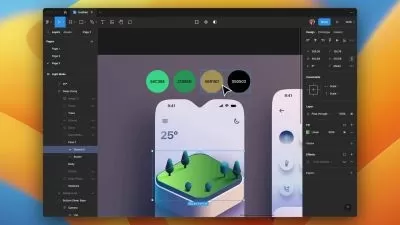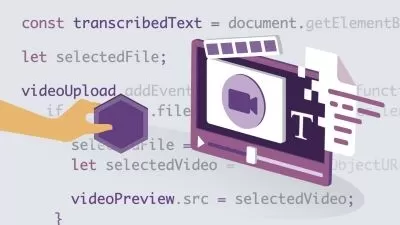Artificial Intelligence and Machine Learning Course
EDUCBA Bridging the Gap
11:45:47
Description
Basic ideas and techniques in the design of intelligent computer systems.
What You'll Learn?
- Identify potential areas of applications of AI
- Basic ideas and techniques in the design of intelligent computer systems
- Statistical and decision-theoretic modeling paradigm
- How to build agents that exhibit reasoning and learning
- Apply regression, classification, clustering, retrieval, recommender systems, and deep learning.
Who is this for?
What You Need to Know?
More details
DescriptionArtificial Intelligence has been used in wide range of fields these days. For example medical diagnosis, robots, remote sensing, etc. Artificial intelligence is around us in many ways but we don’t realize it. For example, the ATM which we are using is an artificial intelligence machine learning training. Few of the advantages of using artificial intelligence is listed below
Greater precision and accuracy can be achieved through AI
These machines do not get affected by the planetary environment or atmosphere
Robots can be programmed to do the works which are difficult for the human beings to complete
AI will open up doors to new technological breakthroughs
As they are machines they don’t stop for sleep or food or rest. They just need some source of energy to work
Fraud detection becomes easier with artificial intelligence
Using AI the time-consuming tasks can be done more efficiently
Dangerous tasks can be done using AI machines as it affects only the machines and not the human beings
Artificial Intelligence has become the centrepiece of strategic decision making for organizations. It is disrupting the way industries function - from sales and marketing to finance and HR, companies are betting on AI to give them a competitive edge. This course is a thoughtfully created course designed specifically for business people and does not require any programming. Through this course you will learn about the current state of AI, how it's disrupting businesses globally and in diverse fields, how it might impact your current role and what you can do about it. This course also dives into the various building blocks of AI and why it's necessary for you to have a high-level overview of these topics in today's data-driven world.
Who this course is for:
- The target audience for this course includes students and professionals who are interested in learning robotics and biometrics. This Machine learning training is also meant for people who are very keen on learning Artificial Intelligence.
Artificial Intelligence has been used in wide range of fields these days. For example medical diagnosis, robots, remote sensing, etc. Artificial intelligence is around us in many ways but we don’t realize it. For example, the ATM which we are using is an artificial intelligence machine learning training. Few of the advantages of using artificial intelligence is listed below
Greater precision and accuracy can be achieved through AI
These machines do not get affected by the planetary environment or atmosphere
Robots can be programmed to do the works which are difficult for the human beings to complete
AI will open up doors to new technological breakthroughs
As they are machines they don’t stop for sleep or food or rest. They just need some source of energy to work
Fraud detection becomes easier with artificial intelligence
Using AI the time-consuming tasks can be done more efficiently
Dangerous tasks can be done using AI machines as it affects only the machines and not the human beings
Artificial Intelligence has become the centrepiece of strategic decision making for organizations. It is disrupting the way industries function - from sales and marketing to finance and HR, companies are betting on AI to give them a competitive edge. This course is a thoughtfully created course designed specifically for business people and does not require any programming. Through this course you will learn about the current state of AI, how it's disrupting businesses globally and in diverse fields, how it might impact your current role and what you can do about it. This course also dives into the various building blocks of AI and why it's necessary for you to have a high-level overview of these topics in today's data-driven world.
Who this course is for:
- The target audience for this course includes students and professionals who are interested in learning robotics and biometrics. This Machine learning training is also meant for people who are very keen on learning Artificial Intelligence.
User Reviews
Rating
EDUCBA Bridging the Gap
Instructor's Courses
Udemy
View courses Udemy- language english
- Training sessions 93
- duration 11:45:47
- Release Date 2024/03/03














